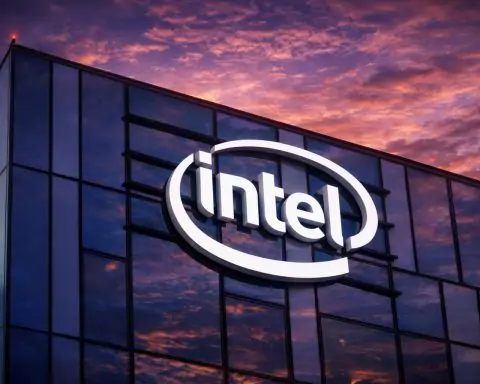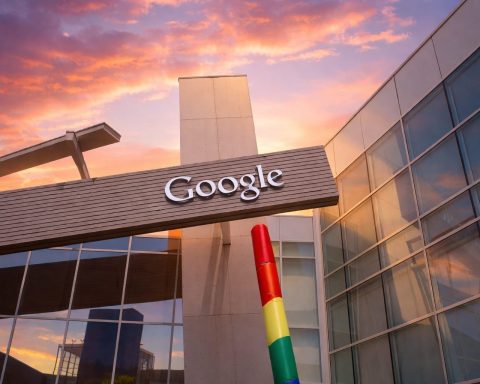- Perplexity AI launched its flagship search engine product on December 7, 2022, founded by Aravind Srinivas, Denis Yarats, Johnny Ho, and Andy Konwinski.
- Its tech uses a retrieval+generation architecture that performs live web searches and generates answers with inline citations, with Sonar, a modified version of Meta’s Llama 3, as the default model and support for GPT-3.5-turbo, GPT-4-turbo, Claude and other engines.
- The platform provides concise, sourced answers, supports multimodal inputs such as images and code, allows file uploads, and includes an Internal Knowledge Search for Pro users with up to 500 private files.
- It operates on a freemium model with a Pro subscription around $20 per month offering access to GPT-4, Claude, Gemini, an API, faster responses, and features like image generation and file analysis.
- In mid-2024 it launched a Publisher Program that shares advertising revenue with partner publishers such as Time, Fortune, and Der Spiegel.
- From about 2 million unique visitors per month in early 2023 to 780 million queries in May 2025 (roughly 30 million per day), Perplexity started with about 3,000 queries on its first day in 2022.
- Perplexity positions itself as ‘Google, but with ChatGPT baked in,’ delivering synthesized, cited answers that aim to outperform traditional Google search.
- Its funding trajectory includes a $26 million Series A in April 2023 led by NEA, a $73.6 million round in January 2024 led by IVP, unicorn status around a $1 billion valuation in April 2024, a $3 billion valuation after SoftBank’s Vision Fund investment later in 2024, and a December 2024 $500 million round led by IVP lifting the valuation to about $9 billion.
- Nvidia CEO Jensen Huang has said he uses Perplexity almost every day, and high-profile investors include Jeff Bezos and Susan Wojcicki.
- In 2025 Perplexity rolled out the Perplexity Assistant for mobile, began a Mac browser beta called Comet, and announced a Deutsche Telekom–backed AI Phone with Magneta AI to extend the platform into devices.
Inside Perplexity AI: The Search Engine That’s Disrupting Google with Conversational Intelligence
Perplexity AI is a new breed of AI-powered search and answer engine that uses large language models (LLMs) to deliver direct answers to user questions instead of just links [1]. In essence, it’s a “conversational search engine” where you ask a natural language question and get a concise, nuanced answer with cited sources drawn from the web [2] [3]. This approach promises to save users from sifting through pages of search results – Perplexity generates a summarized response and shows exactly which sources back up the information, helping people verify accuracy [4]. The tool has rapidly gained attention for its potential to revolutionize online search, attracting major investments and soaring valuations (over $1 billion by 2024 and around $14 billion by mid-2025) [5]. In short, Perplexity AI matters because it represents a compelling vision for the future of search – an “answer engine” that could challenge tech giants by making information retrieval faster, smarter, and more user-friendly.
Founding and Team
Perplexity AI was founded in 2022 by four engineers with deep expertise in AI and back-end systems: Aravind Srinivas, Denis Yarats, Johnny Ho, and Andy Konwinski [6]. The team’s credentials are impressive – for example, CEO Aravind Srinivas is an AI researcher who previously worked at OpenAI and interned at Google’s DeepMind [7] [8]. Co-founder Denis Yarats was a machine learning engineer at Quora and Meta AI, Johnny Ho worked as an engineer at Quora and as a Wall Street quant, and Andy Konwinski was among the founding team at Databricks [9]. Together, they set out to create a new approach to online search by combining a traditional search index with cutting-edge language models, initially calling their prototype “Ask” [10]. The company (Perplexity AI, Inc.) launched its flagship search engine product on December 7, 2022 [11]. It is headquartered in San Francisco and, as of 2025, has grown to around 700 employees [12] under the leadership of Srinivas as CEO. Notably, the name “Perplexity” comes from a term in AI that measures a model’s uncertainty or surprise – fitting for a company focused on making AI less “perplexed” and more accurate in answering questions [13].
Technology: How Perplexity AI Works
At its core, Perplexity AI works by augmenting search engine technology with large language models to understand queries and synthesize answers. When a user asks a question, Perplexity’s system performs web searches, retrieves relevant information, and then an AI model generates a summarized answer in a conversational tone, complete with inline citations to the original sources [14] [15]. This retrieval+generation architecture means Perplexity can provide up-to-date information (via live web data) while using AI to present it in an easy-to-read format. The company has developed its own models and also leverages third-party LLMs – Perplexity’s default model for standard queries is “Sonar,” an in-house modified version of Meta’s Llama 3 [16]. However, more advanced queries tap into an array of AI engines. “Perplexity uses a combination of OpenAI’s GPT-3.5-turbo and GPT-4-turbo language models. It also uses customized versions of Meta’s open-source Llama, one from startup Mistral AI, and Anthropic’s Claude,” an Observer report noted, explaining that the company’s big bet is on its unique interface that feels like search rather than a chat app [17]. In fact, paying subscribers can switch between multiple AI models (including OpenAI’s GPT-4, Google’s Gemini, Anthropic’s Claude 2, and even smaller models like Mistral 7B or Perplexity’s own R1) to find the best fit for their query [18].
Another key element of Perplexity’s tech stack is its constant web crawling and indexing. The platform continuously scans the internet to update its knowledge base, and it uses semantic search techniques to retrieve relevant text snippets that the LLM can use as context [19] [20]. This enables Perplexity to answer questions about recent events or current data more effectively than stand-alone LLMs that have a fixed training cutoff. The user interface is deliberately minimal and search-like: you type a question into a search bar and the AI’s answer appears with footnoted references. Users can then ask follow-up questions to refine or deepen the conversation, and Perplexity will remember context from previous interactions to provide a relevant response [21] [22]. Unlike a traditional Google search, which might require scanning and clicking multiple results, Perplexity attempts to deliver a single, consolidated answer (with sources) – positioning itself as a one-stop “answer machine.” “We’ve built a first-of-its-kind conversational answer engine that’s grounded in providing accurate and relevant information through citations,” CEO Srinivas said, contrasting Perplexity’s approach with the endless lists of links from conventional search engines [23].
Business Model: Monetization and Funding
Perplexity AI currently operates on a freemium model. The basic search and Q&A service is free for the public, while a paid Pro subscription (around $20/month) offers power-user benefits [24] [25]. Pro users get access to more advanced LLMs (like GPT-4, Claude, Gemini, etc.), faster and longer responses, an API for developers, and special features such as image generation and the ability to upload personal files for analysis [26]. There’s also an Enterprise tier with higher limits and team-oriented features for organizations. This subscription-based approach is a primary revenue strategy, but Perplexity is also exploring advertising partnerships in a novel way. In mid-2024 – amid controversy over AI chatbots using news content – the company launched a “Publishers Program” to share ad revenue with content creators whose articles appear in Perplexity’s answers [27] [28]. Under this program, when a user’s query is answered with information drawn from partner publishers (such as Time, Fortune, Der Spiegel, and others), those publishers get a cut of the advertising revenue that Perplexity generates [29]. “It’s a much better revenue split than Google, which is zero,” noted Automattic CEO Matt Mullenweg, one of the early participants, pointing out that if Perplexity ever becomes “the next Google” in scale, these shared revenues could become quite meaningful [30]. Perplexity’s management has indicated that in the long run, they aim to build a sustainable ad-supported search model (much like Google’s) but with direct compensation to content sources as a way to preempt legal issues and support publishers [31] [32].
In terms of funding, Perplexity AI has raised significant venture capital, attracting an all-star roster of backers. The company’s Series A in April 2023 brought in $26 million led by NEA, with participation from Databricks Ventures and angels like former GitHub CEO Nat Friedman and renowned AI scientist Yann LeCun [33]. By January 2024, a new funding round of $73.6 million led by IVP (joined by investors such as Nvidia and Jeff Bezos) valued Perplexity at around $520 million [34]. That was just the beginning – as the AI search hype grew, Bloomberg reported that Perplexity reached “unicorn” status with a $1 billion valuation in April 2024, and later that year received a strategic investment from SoftBank’s Vision Fund, pushing its valuation to $3 billion [35]. In December 2024, the startup closed a whopping $500 million financing round (led by IVP) that tripled its valuation to $9 billion [36]. By mid-2025, rumors of another raise suggested a valuation as high as $14 billion [37] [38]. High-profile tech figures have literally bought into Perplexity’s vision – investors include Jeff Bezos, Tobi Lütke (Shopify’s CEO), Susan Wojcicki (former YouTube CEO), Yann LeCun (Meta’s chief AI scientist), Jeff Dean (Google’s AI lead), and Nvidia (via its venture arm) [39] [40]. This war chest of funding is being used to scale the team, refine the product, and support ambitious projects (like mobile apps and a custom AI browser) as Perplexity seeks to monetize the growing user interest in AI-assisted search.
Features and Use Cases
Perplexity AI comes packed with features that make it far more than a simple Q&A bot, enabling a wide range of use cases. At a high level, it can answer factual questions, explain complex topics, summarize documents, translate languages, and even generate content – all through a chat-style interface. Its hallmark capability is to produce a summary answer with footnoted sources for virtually any query, which is invaluable for research and fact-checking [41] [42]. Users can click the cited links in an answer to verify information or dig deeper. The platform also supports follow-up questions: after getting an initial answer, you can ask a related question or clarify your request, and Perplexity will maintain the context to refine the response [43] [44]. This makes it feel like an interactive research assistant – for example, you might ask “Who is the CEO of OpenAI?” then follow up with “What is his educational background?” and Perplexity will remember that “his” refers to the CEO of OpenAI and continue the conversation.
Beyond basic Q&A, Perplexity offers multimodal and personalization features. It can process images or code snippets and incorporate them into its answers (for instance, analyzing a chart or writing code) [45] [46]. The system also allows file uploads: a user can upload PDFs, Word docs, or other files and ask Perplexity to answer questions about that content or summarize it [47]. This is particularly useful for tasks like summarizing a long report or extracting insights from a set of documents. Another feature, Internal Knowledge Search, lets Pro users create a private repository of up to 500 files (e.g. company documents or research papers) and have Perplexity search both the web and those internal documents simultaneously [48]. This effectively turns Perplexity into a personal research assistant that can leverage proprietary data alongside public information.
Perplexity’s interface includes various tabs and tools to streamline discovery. Users can toggle between different search categories – for example, limit a query to academic sources, social media, or their own uploaded files – to get more targeted results [49] [50]. A “Discover” tab serves up trending news and topics, similar to a news feed on traditional search engines [51]. There’s also a Library that saves all your past query threads; with the Spaces feature, you can organize saved Q&A threads into folders or projects and even invite others to collaborate on them [52] [53]. This is powerful for team research or long-term projects, where you might accumulate a series of related queries. Users can set custom alerts (push notifications) for topics of interest – essentially an AI-enhanced version of Google Alerts – to stay updated on new information [54].
Some of Perplexity’s newer features blur the line between searching and doing. In early 2025, the company introduced the Perplexity Assistant, an AI agent within its mobile app that can perform actions like scheduling calendar events, sending messages, or even hailing a ride, all via natural language commands [55] [56]. The Assistant can use a phone’s camera to identify objects or read on-screen content (multi-modal capabilities), and it’s designed to maintain context across tasks [57]. For example, you could ask the Assistant to find a good Italian restaurant nearby and book a reservation, and it will attempt to handle both search and action. Moreover, Perplexity has been experimenting with a feature called “Pages,” which allows users to generate and share a full report or article based on a prompt – essentially letting the AI create a longer-form answer that can be edited and published. This was introduced to turn multi-step research into a coherent output, though it also raised some plagiarism concerns (addressed in the next section).
Use cases for Perplexity span personal, educational, and professional domains. Students and researchers use it to quickly gather facts and summaries on topics (with citations to ensure academic integrity). Professionals leverage it for summarizing documents or analyzing data – for instance, a lawyer could upload a lengthy legal brief and ask for a concise summary, or a data analyst could query a CSV file through Perplexity to get insights. The multilingual abilities mean it can also serve as a translation tool (e.g. “Explain this French news article in English”) [58] [59]. Content creators and marketers might use Perplexity for brainstorming or drafting content, since the generative AI can produce text or even simple images on demand [60]. And of course, everyday users benefit from its ability to answer random questions – from trivial curiosities to complex “how does this work?” queries – in a straightforward, sourced manner. As TechTarget summarized, “Perplexity’s major use cases include research, summarization, content creation, language translation and data analysis,” though like all AI tools it remains susceptible to errors and biases [61] [62]. Still, with its blend of real-time search and AI reasoning, Perplexity AI has become a kind of Swiss Army knife for information retrieval and generation.
Market Position and Competitors
Perplexity AI has quickly positioned itself as a prominent player in the emerging AI search arena, often mentioned alongside tools like OpenAI’s ChatGPT, Microsoft’s Bing Chat, and other “answer engines” such as You.com or Neeva (the latter of which was an AI-based search startup acquired by Snowflake in 2023). Unlike traditional search giants, Perplexity doesn’t have decades of user data or an ecosystem of services – what it has is a technological head start in marrying large language models with search. This puts it in a competitive-but-collaborative stance with companies like OpenAI (whose models it uses) and Google (whose search index it effectively competes against). Google remains the incumbent behemoth – for perspective, Google.com was getting an estimated 89 billion visits per month in 2022, whereas Perplexity had about 10 million visits in February 2023 [63]. Going up against such scale “might seem like a Sisyphean task,” as TechCrunch quipped, but AI search upstarts believe they can “carve out a niche… by delivering a superior experience.” [64] In other words, Perplexity doesn’t need to dethrone Google overnight; it aims to win users by offering something Google’s standard search can’t – instant, synthesized answers with sources and a conversational interface.
When compared to ChatGPT, which exploded in popularity as a general AI chatbot, Perplexity holds a distinct advantage in information reliability and currency. ChatGPT (as of early 2023) was prone to “hallucinating” facts and had limited knowledge of events post-2021, whereas Perplexity always pulls from current web data and citations are built-in by design [65] [66]. The Perplexity founders have even claimed their system performs better in accuracy than other chatbots [67] – a bold claim, but one partially supported by the tool’s strategy of backing up answers with evidence. Microsoft’s Bing Chat (powered by GPT-4) introduced a similar concept of cited answers in early 2023, and Google followed with Bard and an “AI snapshot” in search results, indicating that the tech giants are adapting to the trend Perplexity represents. Still, Perplexity has managed to keep a lead in terms of user interface simplicity and breadth of integrated sources. It’s often described as “Google, but with ChatGPT baked in.” Meanwhile, You.com (another AI search engine) offers a comparable chat-based search and apps model, but has not garnered the same level of funding or traction as Perplexity. Other entrants like Anthropic’s Claude and Meta’s LLaMA 2 are more focused on being foundational AI models rather than end-user search products, so Perplexity’s real direct competitors remain those trying to fuse web search with generative AI.
Importantly, Perplexity has garnered some validation from figures in Big Tech: Nvidia’s CEO Jensen Huang openly endorses Perplexity as one of his go-to AI tools, reportedly using it “almost every day” for research [68]. (In fact, Nvidia and Google’s AI lead have invested in the company, blurring the lines between competitor and supporter.) And while Google itself is the primary rival in terms of user attention, it’s telling that even Google’s own veteran Jeff Dean and former YouTube CEO Susan Wojcicki saw fit to personally invest in Perplexity [69]. This suggests that industry insiders view Perplexity’s approach as significant in shaping the future of search. Ultimately, Perplexity is carving a space as a specialized answer engine for users who value quick, authoritative answers and are frustrated by the traditional search experience. Whether it can convert a niche appeal into mainstream adoption remains to be seen, but with the momentum behind AI-driven search, Perplexity has placed itself at the forefront of a new search revolution, pushing incumbents to innovate and opening the door for more competition in a field long dominated by one player.
Adoption and Growth
Since its launch, Perplexity AI has experienced remarkable growth in usage, reflecting the surging interest in AI chatbots with real-time information. In its first few months (early 2023), the service was already attracting around 2 million unique visitors per month (about 10 million total visits in Feb 2023) [70] – quite impressive for a brand-new search tool. Fast forward to 2025, and the numbers have skyrocketed: Perplexity’s CEO revealed that the platform handled 780 million queries in May 2025 alone, averaging roughly 30 million queries per day [71]. He noted the growth was over 20% month-over-month, a compounding rate that, if sustained, could make Perplexity one of the most used AI applications in the world [72]. “Give it a year, we’ll be doing, like, a billion queries a week if we can sustain this growth rate,” Srinivas remarked, emphasizing how far the service has come – from just 3,000 queries on its first day in 2022 to tens of millions per day by mid-2025 [73]. This trajectory underscores a phenomenal adoption curve, likely boosted by word-of-mouth and the broader ChatGPT-fueled AI boom.
Several factors have driven this growth. The timing was fortuitous: Perplexity launched to the public just as ChatGPT was igniting mass curiosity about AI, so users and media were actively looking for “ChatGPT for search” solutions. Perplexity’s commitment to keeping the service (in a basic form) free and easily accessible – plus its quick moves to mobile – helped expand its user base. The company released a mobile iOS app in early 2023, followed by an Android app, bringing AI search to smartphones [74] [75]. The apps introduced features like personalized accounts, search history synchronization, and social sharing of answers, which increased engagement [76]. Additionally, a browser extension for Chrome made it convenient for users to query Perplexity from anywhere on the web [77]. By lowering friction and being available across platforms, Perplexity has inserted itself into users’ daily information habits. There’s also a community aspect – users can share interesting answer threads, and some content has even gone viral, showcasing the AI’s capability (or occasionally its quirks).
The backing of influential tech figures likely lends credibility that attracts more users (or enterprise clients) as well. It’s one thing for a startup to claim it’s building the future of search; it’s another to have someone like Jensen Huang say he finds it “really helpful” for his own inquiries [78]. Such endorsements, along with media coverage dubbing Perplexity a top contender in AI search, have helped fuel public interest. We are also seeing early signs of enterprise adoption – companies exploring Perplexity’s API and enterprise Pro features to equip their teams with AI research tools. All these indicators point to Perplexity not only growing a loyal user following but also becoming part of the conversation about how AI will transform search and productivity. While it’s still far from threatening Google’s dominance in sheer volume, Perplexity’s growth metrics and engagement (with users often spending long sessions asking follow-ups) suggest it has tapped into an unmet need for AI-assisted information seeking. The next challenge will be maintaining this growth as bigger players enter the space and as expectations rise.
Expert Opinions on Perplexity AI
Perplexity AI has prompted a range of reactions from industry experts, analysts, and journalists – from enthusiastic praise for its innovation to cautious notes about its challenges. On the positive side, many see Perplexity as a leading example of where search is headed. Matt Mullenweg, CEO of Automattic (WordPress.com’s parent company), has lauded Perplexity’s potential, even partnering with it on the publisher revenue program. He commented that traditional search engines like Google share “zero” revenue with content creators, whereas Perplexity’s approach is “much better,” adding that “if Perplexity is the next Google, which I think it has a chance of being, [these revenue-sharing] numbers could become meaningful.” [79] This underscores a sentiment in the tech community that Perplexity could indeed grow to rival the giants by rewriting some rules of the game.
AI researchers and executives have also shown personal approval through usage. Nvidia’s CEO Jensen Huang revealed in an interview that Perplexity AI is one of the AI tools he uses “almost every day,” noting that it’s his preferred resource when he needs an AI-powered answer engine [80]. Given Huang’s prominence in the AI hardware space, his endorsement carries weight – it signals that Perplexity’s results are useful even to highly knowledgeable users. Similarly, Ben Thompson, a well-known tech analyst, noted Perplexity’s strength in combining search with GPT, describing the experience as “asking Wikipedia + Google + ChatGPT all at once.” Such anecdotal feedback aligns with the idea that Perplexity offers something qualitatively different from either search or chatbots alone.
Journalists covering the AI industry often mention Perplexity in the same breath as OpenAI and Google. Euronews, for instance, called Perplexity “Google’s latest rival” and examined why it was causing controversy (due to its content usage) [81]. TechCrunch’s editors have followed the company’s milestones closely, frequently noting its rapid valuation jumps and product launches [82] [83]. Shirin Ghaffary, writing for Bloomberg, highlighted that Perplexity was attracting major funding at a time when AI startups were hot, implying confidence in the team’s ability to compete in search [84]. On the more critical side, some experts caution that while Perplexity’s answer engine is powerful, it faces an uphill battle in user habit change (getting people to switch from Google) and must navigate the minefield of content rights. Academic researchers have also pointed out that no matter how good the AI, users need to remain critical: Perplexity can accelerate research but can also accelerate the spread of any inaccuracies if one isn’t careful to check those cited sources.
In summary, expert opinion paints Perplexity AI as one of the pioneers of AI-driven search, with many thought leaders impressed by its capabilities and trajectory. The general consensus is that Perplexity has demonstrated the viability of an answer-centric search experience. The remaining question – which experts debate – is whether it will remain a niche tool for power users and AI enthusiasts or break out to mainstream adoption. As of 2025, with endorsements from tech CEOs and substantial venture backing, Perplexity enjoys a strong reputation as an innovator in the space, albeit one that must prove it can scale safely and ethically.
Ethical, Privacy, and Accuracy Concerns
Like many AI platforms that deal with information, Perplexity AI has encountered its share of ethical and legal controversies. One major concern is how it uses content from other websites. In mid-2024, Forbes publicly accused Perplexity of essentially plagiarizing a Forbes article – a Forbes editor found that Perplexity’s AI-generated “summary” of a proprietary, paywalled piece reproduced much of the original content without proper credit [85]. Forbes complained that their name wasn’t prominently cited even though the answer was largely copied from their reporting. This incident was soon followed by a cease-and-desist letter from The New York Times in October 2024, demanding that Perplexity stop scraping NYT content for answers [86]. Around the same time, Dow Jones (owner of The Wall Street Journal) and the New York Post filed a lawsuit against Perplexity alleging copyright infringement – notably pointing out that the AI had even attributed a quote to an article that never contained that quote, a worrying example of AI “hallucination” creating a false reference [87]. In response to these allegations, CEO Aravind Srinivas acknowledged some “rough edges” in the implementation but defended that Perplexity “aggregates” information rather than outright plagiarizes it [88] [89]. The company’s stance has been that summarizing and linking to sources is fair use, but it recognized the tension with publishers. To mitigate this, Perplexity’s team offered to collaborate with publishers – and indeed accelerated the launch of the Publishers Program to share ad revenue (essentially paying content providers when their material is used) [90]. They also published a blog post in October 2024 refuting some of the legal claims and stating that the complaints were misleading, while reiterating openness to revenue-sharing deals [91].
Another contentious issue has been web crawling ethics and privacy. A Wired investigation in June 2024, along with independent developer Robb Knight’s analysis, found evidence that Perplexity’s web crawler was ignoring the standard “robots.txt” rules on some websites [92]. Websites use robots.txt files to tell bots which pages or sections to avoid, but Wired reported that Perplexity appeared to be using undisclosed IP addresses and spoofed user agents to bypass those rules [93] – contrary to the company’s claims of respecting website preferences. When confronted, Srinivas denied that Perplexity was intentionally ignoring the Robots Exclusion Protocol, though his responses (e.g., “it’s complicated” when asked if they’d stop scraping certain content) did not fully reassure critics [94]. This raised questions about Perplexity’s transparency in how it gathers data and whether it may be too aggressive in scraping content. By mid-2025, even the BBC was reportedly considering legal action against Perplexity for unauthorized use of its content [95]. All of this underscores the delicate balance between building an AI that knows “everything” on the web and respecting the rights and rules of content owners.
There are also the usual AI accuracy and bias issues to consider. Perplexity’s developers freely admit that the system can suffer from hallucinations (fabricating false information) or bias inherited from training data [96] [97]. The service’s use of multiple models means it’s subject to the quirks of each – OpenAI’s models might refuse certain queries or inject political biases; open-source models might be less filtered. While Perplexity’s citation feature helps users catch errors, it’s not foolproof. The lawsuit example of a fake quote is a case where the AI confidently provided a source for a statement that source never made [98]. Such mistakes can erode trust and have serious implications if users act on faulty information. Bias is another worry: if the underlying LLMs have skewed training data, the answers could reflect unintended prejudices or perspectives. Perplexity’s team has to continuously refine prompts and perhaps filter outputs to prevent problematic content. On the privacy front, user data is a consideration as well. Perplexity does log queries (partly to provide your history library and to improve the product). The company hasn’t been embroiled in any user-data scandals, but their future plans hint at deeper tracking: notably, CEO Srinivas mentioned that their upcoming browser (Comet) could track user activity beyond the Perplexity app to enable premium ad targeting – essentially doing what Google does in Chrome to serve ads [99]. This has raised eyebrows, since one might expect a disruptive startup to not follow Google’s privacy-invasive footsteps. It suggests that if Perplexity pursues an ad model at scale, it will face the same scrutiny over data collection and privacy as the incumbents do.
In summary, while Perplexity AI offers an exciting leap in capability, it also inheres many of the ethical challenges of both the search engine world and the AI world. The company is actively seeking solutions (like partnering with publishers rather than fighting them, and emphasizing transparency through citations), but it operates in a legal gray area that is still evolving. Users are advised, as with any AI tool, to use their own judgment – to double-check sources, be mindful of potential inaccuracies or omissions, and stay aware that the convenience of an “answer engine” doesn’t absolve it of errors. As the product grows, how Perplexity navigates these concerns will be crucial to its long-term sustainability and reputation.
Future Outlook
The future of Perplexity AI looks ambitious and fast-moving. The company’s vision is clearly to expand from an answer engine into a broader AI assistant that can take actions on behalf of users. “Perplexity is transitioning from just being an answer machine to an action machine,” CEO Aravind Srinivas said at a 2025 event [100]. We are already seeing this with the launch of the Perplexity Assistant (capable of multi-step tasks) and the experimental Comet browser, which integrates Perplexity’s AI into a web browser to create what Srinivas calls a “cognitive operating system” for the internet [101]. The idea behind Comet – now in beta for Mac users – is to bake the AI into every aspect of your web experience. Imagine having an AI sidekick available on any webpage to summarize content, autofill forms, compare information, or even execute scripts. Srinivas has hinted that Comet will hybridize client-side and server-side computing to seamlessly weave AI into browsing [102]. If successful, this could fundamentally change how we navigate the web, turning the passive act of browsing into an interactive, AI-augmented activity.
Moreover, Perplexity is looking beyond software into integrated hardware solutions. In early 2025, the company announced a partnership with Deutsche Telekom (T-Mobile’s parent) to develop a new concept called an “AI Phone.” This device, slated to be revealed in late 2025, is described as an “app-less” smartphone dominated by voice-controlled AI [103]. It will reportedly run a system called “Magneta AI,” giving users immediate access to Perplexity’s Assistant alongside other AI tools (like Google Cloud’s AI services and creative apps like Picsart) [104]. The AI Phone is meant to execute tasks via voice command – for example, booking flights or making dinner reservations – without the user manually opening apps, effectively having the AI orchestrate multiple services behind the scenes. If this comes to fruition, Perplexity could become not just a search engine, but the central brain of a new smartphone experience, indicating how the company might monetize and grow via consumer devices. It’s a bold move that pits Perplexity against voice assistants like Siri/Google Assistant, but with the advantage of its strong Q&A and task automation pedigree.
On the business side, we can expect continued aggressive expansion. With its hefty funding, Perplexity will likely invest in improving its AI models (perhaps developing more proprietary models like Sonar to reduce reliance on others). The mention that they have trained some models that “surpass competitors for answer quality despite being way cheaper and blazing fast” [105] suggests they will pursue a strategy of custom optimization – potentially giving them an edge in speed/cost if not raw power. Internationalization is another frontier: the assistant is already offered in 15 languages [106], and the core service works in many languages, so growing a global user base is on the horizon. We might see Perplexity tailoring results for different markets or partnering with foreign content providers.
The search industry at large will certainly feel Perplexity’s influence. Google has already adapted by rolling out AI summaries in Search Labs and ensuring Bard improves with citations, a sign that the incumbent is watching closely. Other search startups will either need to differentiate (e.g., focusing on specific domains like developer search in the case of Phind) or risk being overshadowed by Perplexity’s fast execution. One interesting outcome of Perplexity’s rise is the pressure on information ecosystems: the fact that it’s cutting revenue-sharing deals may set a precedent for how AI companies coexist with news media and content creators. If Perplexity’s model proves viable, future AI tools might also proactively pay content sources, which could help alleviate the “AI vs. publishers” conflicts.
In terms of user impact, if Perplexity continues on its growth trajectory, more people could start to “Google” less and ask Perplexity more. The convenience of getting direct answers is undeniable. Experts predict a continued convergence of search and generative AI, and Perplexity is currently one of the clearest embodiments of that convergence. Over the next few years, success for Perplexity could look like this: becoming the default research assistant for students and professionals, a common smartphone companion via its app or AI Phone, and maybe even a verb in tech lexicon (“Perplexity it” instead of “Google it”). Of course, it will have to avoid pitfalls – accuracy issues, regulatory hurdles, stiffening competition from the likes of Google’s own AI search or OpenAI’s web-connected systems, etc.
Overall, the outlook for Perplexity AI is optimistic. The company is well-funded, innovating on multiple fronts, and riding a wave where virtually every knowledge worker is seeking better tools to cope with information overload. If it stays true to its mission of “maximizing the knowledge and productivity of the average consumer through the world’s most transparent information service” [107], Perplexity could significantly impact how we all find and use information. Even if it doesn’t unseat the search giants, it has already sparked them to evolve – and in the end, that means a better search experience for everyone. The next chapter will be watching how Perplexity’s “answer engine” evolves into an “action engine” and how that changes our daily interactions with technology.
Sources: [108] [109] [110] [111] [112] [113] [114] [115] [116] [117] [118] [119] [120] [121] [122] [123] [124] [125] [126] [127] [128] [129] [130] [131] [132] [133] [134] [135] [136] [137] [138] [139] [140] [141] [142] [143] [144] [145]
References
1. observer.com, 2. techcrunch.com, 3. www.techtarget.com, 4. www.techtarget.com, 5. en.wikipedia.org, 6. en.wikipedia.org, 7. techcrunch.com, 8. techcrunch.com, 9. techcrunch.com, 10. www.techtarget.com, 11. en.wikipedia.org, 12. en.wikipedia.org, 13. observer.com, 14. techcrunch.com, 15. www.techtarget.com, 16. www.techtarget.com, 17. observer.com, 18. techcrunch.com, 19. www.techtarget.com, 20. www.techtarget.com, 21. techcrunch.com, 22. techcrunch.com, 23. techcrunch.com, 24. en.wikipedia.org, 25. techcrunch.com, 26. techcrunch.com, 27. www.theverge.com, 28. www.theverge.com, 29. www.theverge.com, 30. www.theverge.com, 31. www.theverge.com, 32. www.theverge.com, 33. techcrunch.com, 34. techcrunch.com, 35. observer.com, 36. observer.com, 37. en.wikipedia.org, 38. en.wikipedia.org, 39. observer.com, 40. en.wikipedia.org, 41. www.techtarget.com, 42. www.techtarget.com, 43. techcrunch.com, 44. techcrunch.com, 45. www.techtarget.com, 46. www.techtarget.com, 47. www.techtarget.com, 48. www.techtarget.com, 49. www.techtarget.com, 50. www.techtarget.com, 51. www.techtarget.com, 52. www.techtarget.com, 53. www.techtarget.com, 54. www.techtarget.com, 55. en.wikipedia.org, 56. en.wikipedia.org, 57. en.wikipedia.org, 58. www.techtarget.com, 59. www.techtarget.com, 60. www.techtarget.com, 61. www.techtarget.com, 62. www.techtarget.com, 63. techcrunch.com, 64. techcrunch.com, 65. techcrunch.com, 66. www.techtarget.com, 67. techcrunch.com, 68. www.tomshardware.com, 69. observer.com, 70. techcrunch.com, 71. techcrunch.com, 72. techcrunch.com, 73. techcrunch.com, 74. techcrunch.com, 75. en.wikipedia.org, 76. techcrunch.com, 77. en.wikipedia.org, 78. www.financialexpress.com, 79. www.theverge.com, 80. www.tomshardware.com, 81. en.wikipedia.org, 82. en.wikipedia.org, 83. techcrunch.com, 84. en.wikipedia.org, 85. en.wikipedia.org, 86. en.wikipedia.org, 87. en.wikipedia.org, 88. en.wikipedia.org, 89. en.wikipedia.org, 90. observer.com, 91. en.wikipedia.org, 92. en.wikipedia.org, 93. en.wikipedia.org, 94. en.wikipedia.org, 95. en.wikipedia.org, 96. www.techtarget.com, 97. www.techtarget.com, 98. en.wikipedia.org, 99. techcrunch.com, 100. observer.com, 101. techcrunch.com, 102. techcrunch.com, 103. observer.com, 104. observer.com, 105. observer.com, 106. en.wikipedia.org, 107. techcrunch.com, 108. observer.com, 109. techcrunch.com, 110. www.techtarget.com, 111. www.techtarget.com, 112. en.wikipedia.org, 113. en.wikipedia.org, 114. techcrunch.com, 115. techcrunch.com, 116. www.techtarget.com, 117. techcrunch.com, 118. observer.com, 119. techcrunch.com, 120. techcrunch.com, 121. techcrunch.com, 122. techcrunch.com, 123. techcrunch.com, 124. observer.com, 125. observer.com, 126. en.wikipedia.org, 127. www.theverge.com, 128. www.theverge.com, 129. techcrunch.com, 130. www.techtarget.com, 131. www.techtarget.com, 132. www.techtarget.com, 133. en.wikipedia.org, 134. techcrunch.com, 135. techcrunch.com, 136. www.tomshardware.com, 137. en.wikipedia.org, 138. en.wikipedia.org, 139. observer.com, 140. en.wikipedia.org, 141. www.techtarget.com, 142. techcrunch.com, 143. observer.com, 144. techcrunch.com, 145. observer.com










